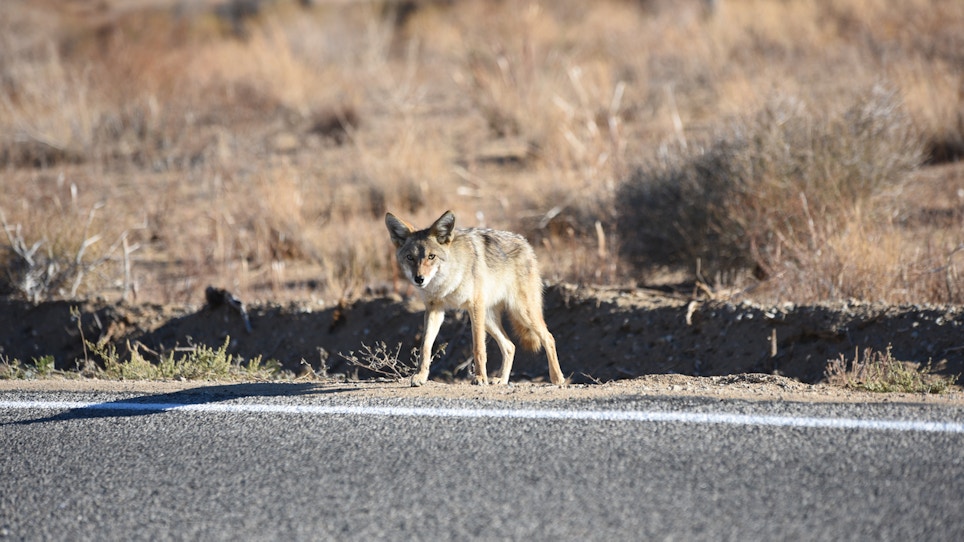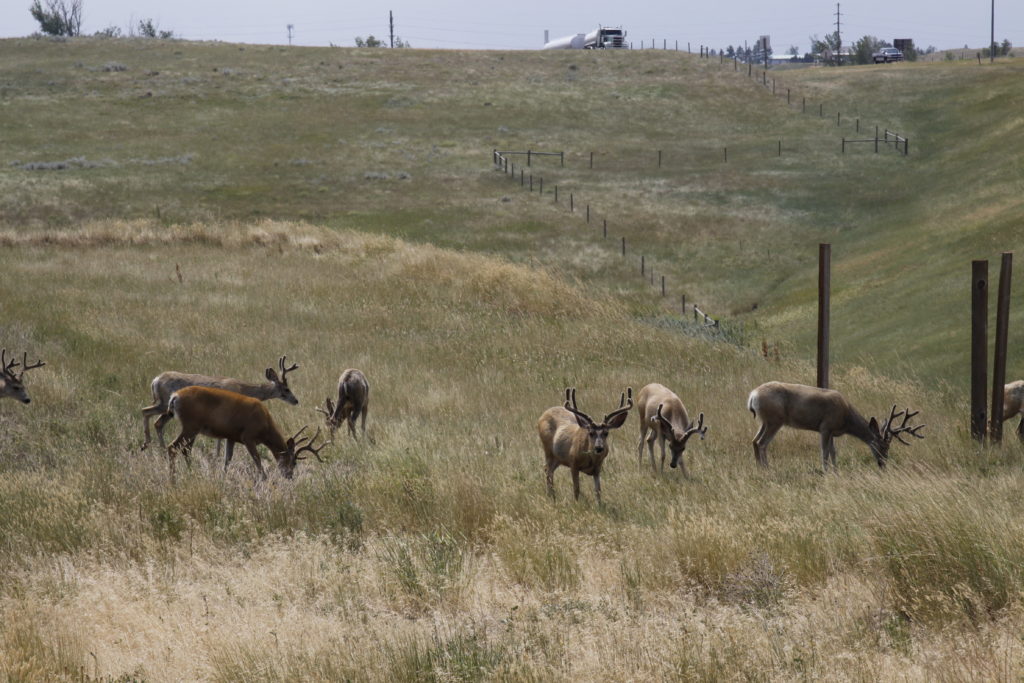Looking for new coyote setup sites is like hunting for hide-and-seek champ Bigfoot. It’s never ending. But the next location you might want to scout in your zip code is one you travel daily — highways.
If you live in deer country, East or West, you see road-killed deer along major highways almost every day. Deer and auto collisions occur throughout the year, but seasonal changes cause spikes in deer travel. Spring nutrition, summer solitude, winter yarding and, of course, the intensity of the rut create a continued ebb and flow of deer travel across North America’s byways. Auto collisions supply a virtual buffet to any coyotes savvy enough to partake of the roadside feast.
When to hunt highways
The highest collision rates occur during the November rut, according to auto insurance claims that tally more than 1 million each year. State Farm did a study and put the odds of you hitting a deer at about 1 in 170 with a bill of more than $3,000 hitting your bank account. You might as well research ways to take advantage of coyote bait readily available along nearby byways.
You can scout for these coyote-dining hotspots in two ways:
- Simply drive up and down roads and look for dead deer. An even better method to scout while traveling is to look for deer crossing signs. Highway departments put them up in areas that have a history of high deer collisions.
- Contact your state highway department and ask for records on deer collisions. They keep meticulous notes on where collisions occur, especially those with deer.
Before you hunt the highway sectors for coyotes you need to educate yourself. Even if the adjacent land happens to be public, states may still have laws regarding how close to public roadways you can hunt or discharge a firearm. Most laws are rigid, but some states do give you some leeway. For example, my native state of South Dakota actually allows you to shoot from a road at a coyote or other listed varmint if you have the permission of the adjacent landowner. Acquiring permission from private landowners will also be a challenge, but with predator-control requests you have a leg up. If you get a green light to a highway frontage with lots of deer collisions, you need to put a calling plan in place.
Making a plan
First, you need to map out access to suspected coyote hideouts along highways. Although coyotes oftentimes feed boldly along highways in daylight, the majority will seek cover along highways and in adjacent pastures waiting for the next screech of the brakes. View areas from above with the help of hunting apps like ScoutLook Weather in combination with ScentCone. It gives you a view of where your scent will blow hour by hour for 72 hours so you can precisely plan for future hunts and what stand will work best for the wind forecast.
Which calls to use
For coyote calls you have two obvious options. First, coyotes are preying on the misfortune of deer, so if you want to sound like one of the misfortunate ones use fawn bawls or pleading doe bleats. It could ramp up the arrival of any nearby coyotes waiting for an insurance adjuster.
Next, consider the fact that the roadways may already be keeping bellies plump on the local coyote population, so instead of using the prey-calling route consider coyote vocalizations. Any coyote clan that has taken up residence along a deer-worthy road will likely be authoritative over the area. Howls, dominant barks and fighting sounds may spark coyotes to guard their domain.
Last season I set up less than 200 yards from a busy byway in the predawn darkness. At shooting light I sent a series of lone howls across the landscape, and 30 minutes later a coyote guarding its highway frontage showed up to check out the buffet intruder. I Nikon-ranged the coyote at 215 yards and a V-Max from my Bergara opened up a space at the all-you-can-eat diner.
Highways feed numerous coyotes throughout the country. If you have a roadkill factory near you it’s time to take advantage of the coyote gathering spot.
Featured image: iStock







